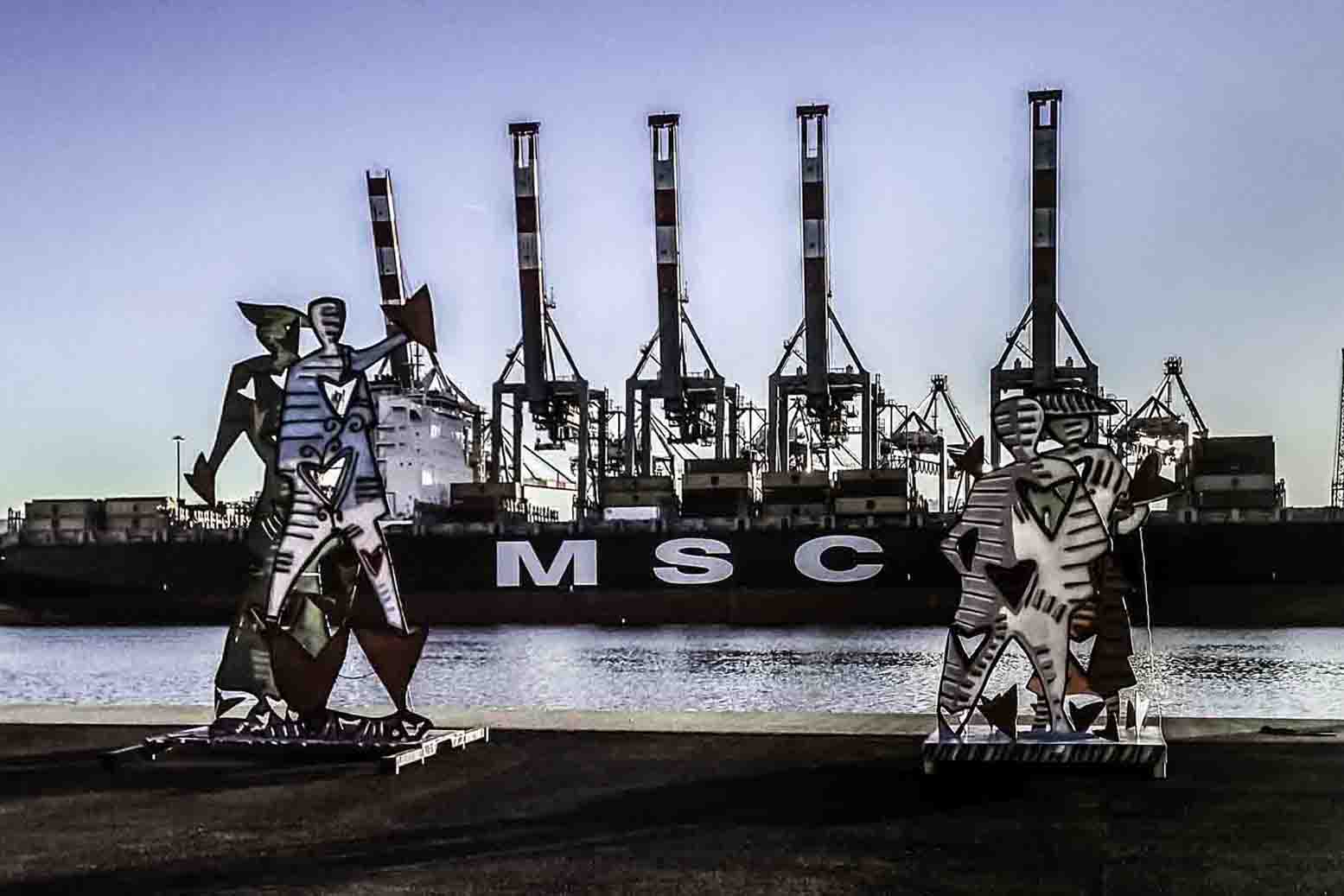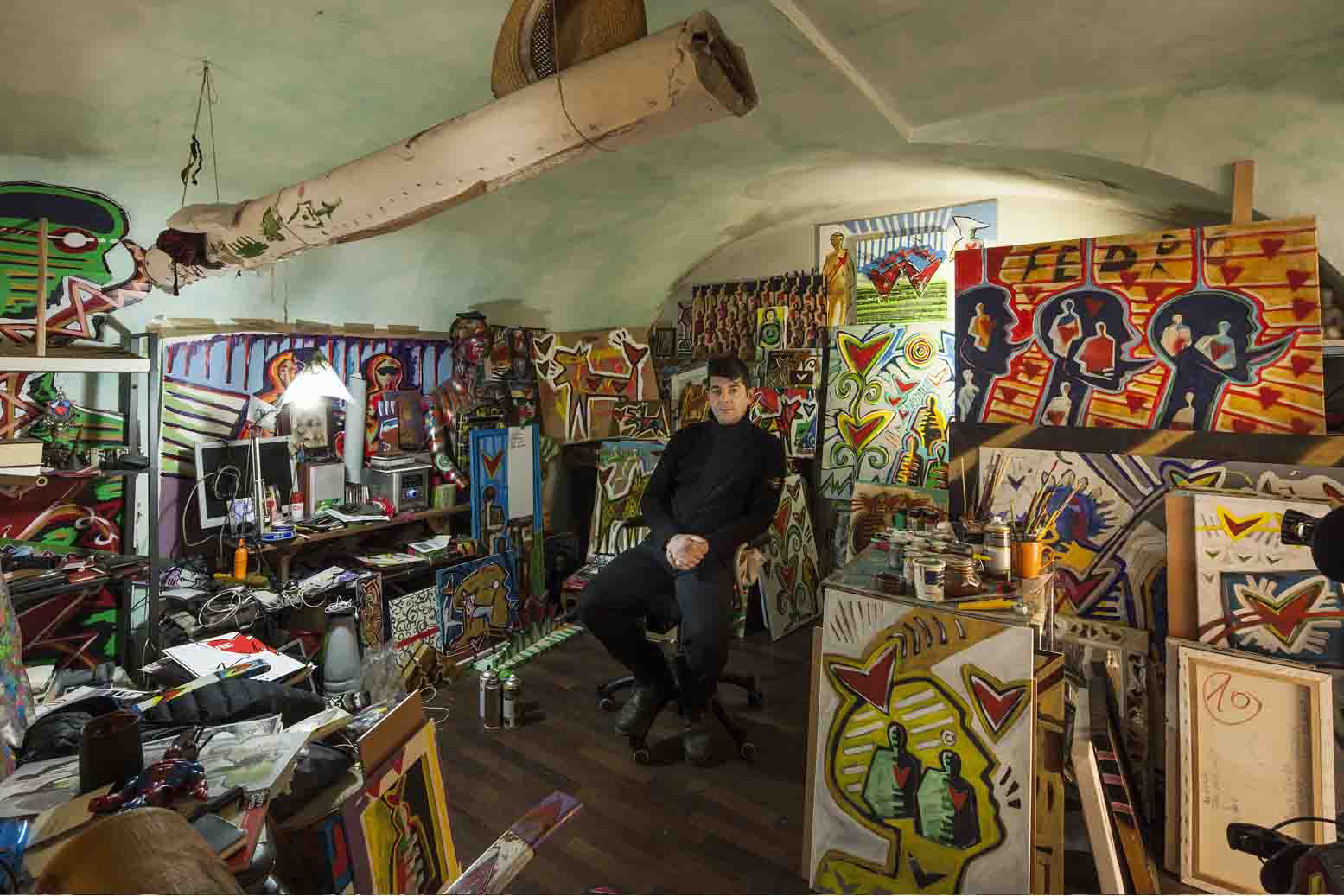
10 May When art comes into the harbour
Author : By Noëlle Duck
The initial art interest now lies in Marseille and Shanghai. However, using art as a means of internal communication might seem, in the opinion of its actors, “strange and incongruous”. But the result is there, and for the last two years the terminal docks of La Spezia’s commercial port have acted as open-air museums whose sculptures complement the permanent exhibit that drives the locals of the Contship Italia, located in the largest Italian port La Spezia.
How does one establish a playful link between isolated engi¬¬neers in front of their screens in a glass cage where they develop huge cranes, an army of office workers who speak in all languages, executives managing the handling of 1.5 million containers annually, and workers operating on endless docks? This improbable equation, according to Mauro Solinas, who is responsible for the external relations of Contship Italia, has been resolved unexpectedly: bring art into the harbour! He knows artist Paolo Emilio Gironda well, who is located in the historic center of Zarzana, which is nearby. With Gironda’s raw painting style proving to be as tender as life itself as well as being accessible, Solinas decided to bring it to the premises of his business: “For me, art is one of the elements of everyday life,” he says. “So why not integrate an artistic contribution in a workplace, provided that there is compatibility between two worlds finally not as distant as we imagined?” Solinas invited Gironda to visit his marine environment, who discovered with some concern the immense docks crowded with stacks of thousands of graphic and colorful containers: “I did not know what to do with this giant space … and then I decided to put what I normally make on a canvas in 3 dimensions, and go to those who have never seen my painting and who work in an environment where art is excluded.”
An Encounter with a Wizard
Mauro Solinas gained acquaintance with Moruzzo Marco, the man in the firm who repairs, designs and manufactures industrial tools. Such are real wizard mechanics, and this is the turning point in this story: he will only work with recycled local iron with the workers of the port. Marco was seduced: “This was strange but still interesting to see happen, and the results were fantastic!” He says. For two months, even skeptics recover pieces of scrap sheets of metal and iron rods abandoned here and there at the port. We cut up, assemble, and often weld the drawings of Paolo Gironda, which was able to integrate, by a force of discretion, small gifts of original works to the workers (“I never make any lithographs or reproductions, art should be accessible to all”). Being distrustful at first, the workers’ curiosity was eventually piqued and welded interest in the project. When the sculptures were put on public display for the first time, such as on the occasion of jazz singer Dee Dee Bridgewater’s concert, which was organized on the occasion of the inauguration of this exhibition like no other, the workers of Contship Italia stood simply proud. “I do not want to deprive myself of the feeling of having participated in the creation of a work of art by permitting a piece of abandoned iron to become a source of pleasure,” says Marco Moruzzo soberly. The gamble certainly paid off!




